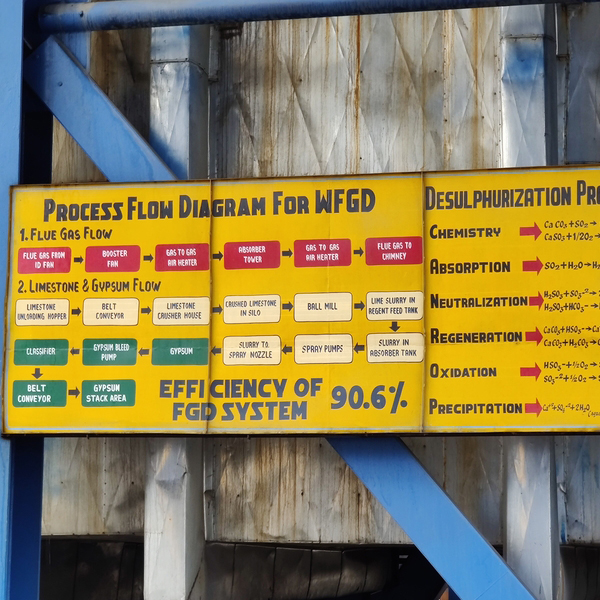Dewater Belt Repair & Maintenance
Flue Gas Desulfurization (FGD) devices require many different components to run efficiently. At IA Mechanical, we work to repair all aspects of these FGD systems to ensure maximum efficiency. With recent growing federal regulations, FGD systems have become required more often than ever before. Exhaust gases can contain substances that are harmful to the environment, so this system has become essential to meet regulations.
A crucial component of the (FGD) process is the dewatering belt. Working closely with the hydrocyclones in the system, this belt allows for gypsum sludge produced throughout the process to be dewatered, or have the moisture removed from it to around 8%. The dried-out material left behind is a valuable material used for many construction and cement industries.
 How it works
How it works
In the dewatering system, a bleed stream containing gypsum solids is taken from each molecule using bleed pumps. From here, it goes into two rounds of hydrocyclones to further separate materials. Once on the dewatering belt, it is a continuous process. Gypsum filter cloths are used as the material moves on the belt. There are other occurrences where two-ply mesh made of polyester monofilaments with staple fibers are used.
While demanding on the machinery, it is found that the mesh does not get blocked, and it is easy to clean. This makes for a relatively low loss of product and minimal cleaning. As the material goes through the process on the belt, it eventually removes around 90% of the moisture leaving relatively dry gypsum material. Filtration rates are anywhere from 150 to 400 lb./hr/square foot. Low cake moisture is imperative for quality final gypsum products. The belt filter method allows for minimal caking and a low overall moisture percentage.
The material travels from the hydorocyclone cluster to the horizontal belt filter. From there, it cycles through as needed and after the process is complete, it exits the belt and providers wallboard grade gypsum or goes into the cake wash tank. If it goes into the cake wash tank it continues the cleaning process to reach the desired gypsum material.
Not only does this process take care of what could be harmful wastewater, but it also provides beneficial material to be reused. With the use of state-of-the-art technology, the dried gypsum is used in construction applications around the world. Gypsum can be turned into blocks that can be used for building, and it can also be used in cement or wallboards.
If the dewatering belts aren’t working as they should, not only will wastewater be more prevalent, but there will also be less production of reusable Gypsum. To ensure that all aspects of the FGD process are running smooth and minimize the risk of running into issues, make sure to check that your dewater belt is operating as it should regularly. For any operating or efficiency issues, call IA Mechanical. No job is too big or complex for us. We prioritize fast and quality service because we know that time means money for your business.



